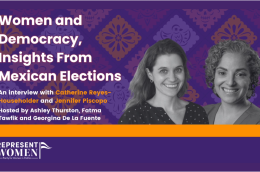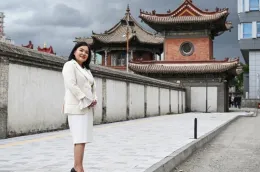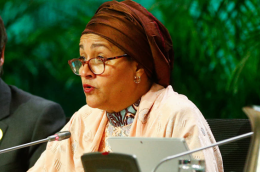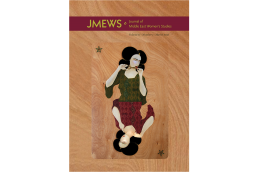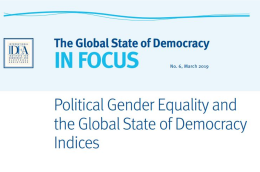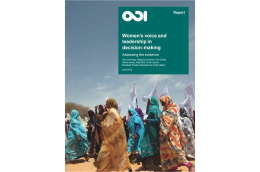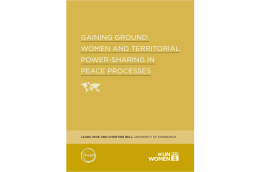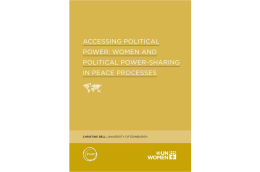Women's Leadership
Main navigation
Welcome to the first installment of the new "International Election Series," where they explore the vital role women play in shaping democratic processes around the world. In this episode, they delve into the recent Mexican elections, examining how women candidates influence politics.
RepresentWomen’s Communications Director Ashley Thurston, International Research Manager Fatma Tawfik, and Mexican scholar interviewed Jennifer Piscopo and Catherine Reyes-Housholder about the historic Mexican elections.
See here the full episode published by RepresentWomen on 8 July 2024.
Image by RepresentWomen
The Friedrich Naumann Foundation’s Washington, D.C. office hosted a distinguished international delegation of twelve female professionals working in politics, from May 4th – May 11th, 2024 in Washington, D.C., and Denver, Colorado. The group comprised of participants from: Argentina, Armenia, Bhutan, Bulgaria, Chile, Germany, Hungary, Jordan, Lithuania, Pakistan, Philippines, and Tanzania. The delegation met with experts across various political women’s institutions, non-profit organizations, political NGOs, legislative offices, and more specifically with The World Bank Group, researchers, journalists, and academics. The group discussed in detail initiatives and policies that have helped to promote gender equality as well as the persistent economic, political, legal, and social barriers for women.
Across meetings there was one consistent theme: we are far from reaching gender equality and there is much to do. However, the bleak outlook was countered with many examples of policies and tangible ways to take steps toward equality. One cannot start to draft policies without fully understanding the economic, political, legal, and social barriers that exist for women in the context of their home country. What might be feasible or encouraged somewhere, will not always work in someone else’s context. For the purposes of this policy takeaway, we will focus pointedly on the United States.
Read here the full article published by the Friedrich-Naumann-Stiftung für die Freiheit on 27 June 2024.
Image by Friedrich-Naumann-Stiftung für die Freiheit
This year, countries accounting for nearly half of the world’s population are holding national elections. Instead of representing a triumph of democracy, however, the results suggest something darker: in many places, voters have flocked to the polls only to elect or reelect autocratic populists. They have notched victories this year in some of the largest countries, including India, Indonesia, and Russia. And these wins come on the heels of last year’s populist victories in Argentina and Turkey.
Today, more than 70 percent of the world’s population lives under autocratic rule, and a minority of the world’s governments are democratic, according to the most recent annual report from the V-Dem Institute, an organization that studies democracy. What the report does not reveal is that a central component of this assault on democracy is the targeting of women political leaders and women’s rights by far-right extremists and elected autocratic populists who represent the leading edge of democracy’s decline. For three decades, the share of women legislators across the globe was growing thanks to mandated quotas in many countries, but the rate of increase has stalled over the past two years, a signal U.S. Ambassador-at-Large for Global Women’s Issues Geeta Rao Gupta calls “scary.” Women today only occupy 27 percent of the world’s legislative seats. An even starker sign is that the number of women leading countries has sharply declined in the past year.
Read here the full article published by Foreign Affairs on 3 June 2024.
Image by Foreign Affairs
India, the world’s largest democracy, has made significant strides in women’s political participation since its independence in 1947. However, a substantial gender gap persists in Indian politics, reflecting deeper societal inequalities and cultural barriers. This article examines the current state of women’s representation in Indian politics, the progress made so far, and the challenges that continue to hinder gender parity in the political sphere.
Current State of Women’s Representation:
While women constitute nearly 50% of India’s population, their representation in political bodies falls far short of this proportion. As of 2024, women make up approximately 15% of the Lok Sabha (the lower house of parliament) and 14% of the Rajya Sabha (the upper house). At the state level, women’s representation in legislative assemblies averages around 9%. These figures, though gradually improving, highlight the significant underrepresentation of women in Indian politics.
Read here the full article published by Odishabarta on 27 June 2024.
Image by Odishabarta
Mongolians go to the polls in parliamentary elections on Friday, with the ruling Mongolian People's Party widely expected to retain a majority it has held for eight years.
But for the first time in almost a decade, parties are required by law to ensure that 30 percent of their candidates are women, in a country where politics is overwhelmingly dominated by men.
As a result, more women than ever before are running this year, in a new voting system that balances proportional lists with district candidates elected directly by the people.
"The era we are living in demands the quota," Dorjzodov Enkhtuya, a 51-year-old former TV anchor running for the main opposition Democratic Party, told AFP in capital city Ulaanbaatar.
"There are almost no women in decision-making positions," she said.
"We are changing the game."
Read here the full article published by France 24 on 27 June 2024.
Image by France 24
A lack of women at decision-making tables around the world is hindering progress when it comes to tackling conflicts or improving health and standard of living, the highest ranking woman in the UN has said.
“We’re half the population. And what we bring to the table is incredibly important and it’s missing,” said Amina Mohammed, the United Nations deputy secretary general. “I think it’s why mostly our human development indices are so bad, why we have so many conflicts and we’re unable to come out of the conflicts.”
Since her appointment in 2017, Mohammed has been a constant voice in pushing back against the under-representation of women in politics, diplomacy and even the UN general assembly. Her efforts have helped cast a spotlight on the fact that women remain relegated to the margins of power around the world; last year the global proportion of female lawmakers stood at 26.9%, according to Switzerland’s Inter-Parliamentary Union.
Speaking to the Guardian, Mohammed said “flexing muscle and testosterone” often dominated at tables of power around the world.
“This win, win, win at all costs – I think that would change if women were at the table,” she said.
Read here the full article published by The Guardian on 19 June 2024.
Image by The Guardian
